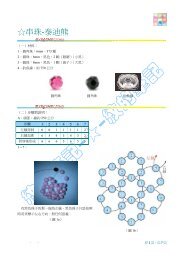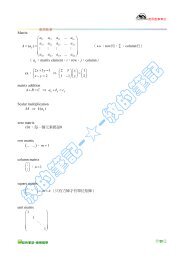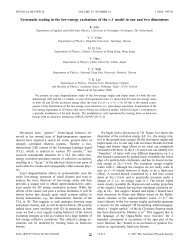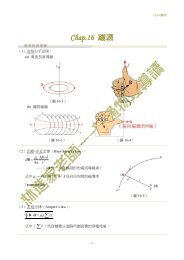Chapter 22 Materials Selection and Design Considerations
Chapter 22 Materials Selection and Design Considerations
Chapter 22 Materials Selection and Design Considerations
Create successful ePaper yourself
Turn your PDF publications into a flip-book with our unique Google optimized e-Paper software.
<strong>22</strong>.14 Assessment of CPC Glove <strong>Materials</strong> to Protect Against Exposure to Methylene Chloride • W115<br />
is polymerized in situ during surgery. This reaction must be carefully controlled because<br />
the heat released during polymerization can lead to damage to the bone tissue.<br />
This acrylic bond cement has, in some cases, contributed to femoral stem loosening<br />
because it is brittle <strong>and</strong> does not bond well with the metallic implant <strong>and</strong> bone<br />
tissue. It has been found that a more secure implant–bone bond is formed when the<br />
stem <strong>and</strong> cup are coated with a porous surface layer consisting of a sintered metal<br />
powder. After implantation, bone tissue grows into the three-dimensional pore network<br />
<strong>and</strong> thereby fixates the implant to the bone. Such a coating has been applied<br />
to the upper stem <strong>and</strong> outer acetabular cup regions of the hip replacement shown<br />
in the chapter-opening photograph for this chapter.<br />
Chemical Protective Clothing<br />
<strong>22</strong>.13 INTRODUCTION<br />
There are a number of commercially important chemicals that, when exposed to<br />
the human body, can produce undesirable reactions; these reactions may range from<br />
mild skin irritation, to organ damage, or, in the extreme case, death. Anyone who<br />
risks exposure to these chemicals should wear chemical protective clothing (CPC)<br />
to prevent direct skin contact <strong>and</strong> contamination. Protective clothing includes at<br />
least gloves, but in some instances boots, suits, <strong>and</strong>/or respirators may be required.<br />
This case study involves the assessment of chemical protective glove materials for<br />
exposure to methylene chloride.<br />
The choice of a suitable glove material should include consideration of several<br />
important factors. The first of these is breakthrough time—i.e., the length of time<br />
(in minutes) until first detection of the toxic chemical species inside the glove. Another<br />
key factor is the exposure rate—that is, how much of the toxic chemical passes<br />
through the glove per unit time. Consideration of both breakthrough time <strong>and</strong> exposure<br />
rate is important. Other relevant material factors include material degradability,<br />
flexibility, <strong>and</strong> puncture resistance. Trade-offs of these several characteristics<br />
may be necessary. For example, a thick glove may have a longer breakthrough time<br />
<strong>and</strong> lower exposure rate, but be less flexible than a thin glove.<br />
Common commercially available glove materials include natural rubber, nitrile<br />
rubber, poly(vinyl chloride), neoprene rubber, <strong>and</strong> poly(vinyl alcohol) (PVA). Some<br />
gloves are multilayered, that is, composed of layers of two different materials that<br />
take advantage of the desirable features of each. For example, PVA is highly impermeable<br />
to many organic solvents, but is soluble in water; any exposure to water<br />
can soften (<strong>and</strong> ultimately dissolve) the glove. To counteract this liability, CPC materials<br />
that consist of a thin layer of PVA s<strong>and</strong>wiched between two layers of a nonpolar<br />
polymer such as polyethylene have been developed. The PVA layer impedes<br />
the diffusion of nonpolar materials (i.e., many of the organic solvents), whereas the<br />
polyethylene layers shield the PVA from water <strong>and</strong> inhibit the permeation of polar<br />
solvents (i.e., water <strong>and</strong> alcohols).<br />
<strong>22</strong>.14 ASSESSMENT OF CPC GLOVE MATERIALS<br />
TO PROTECT AGAINST EXPOSURE TO<br />
METHYLENE CHLORIDE<br />
Let us consider the selection of a glove material for use with methylene chloride<br />
(CH 2Cl 2), a common ingredient in paint removers. Methylene chloride is a skin irritant,<br />
<strong>and</strong>, furthermore, may also be absorbed into the body through skin; studies

















